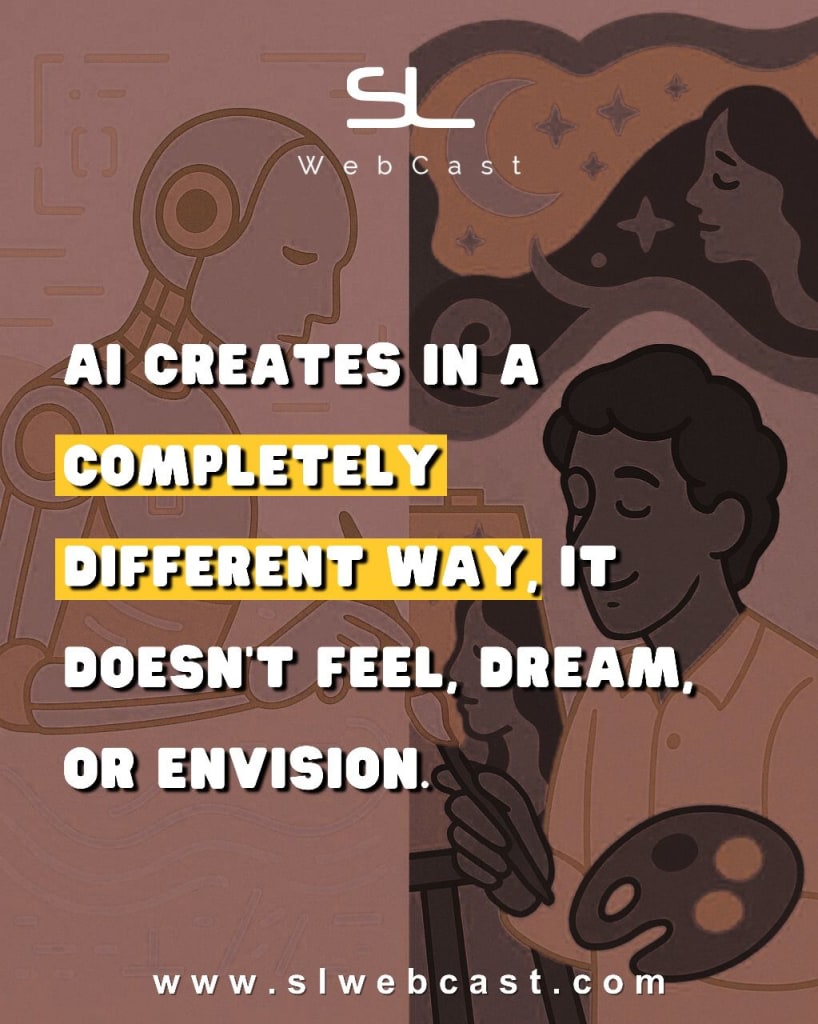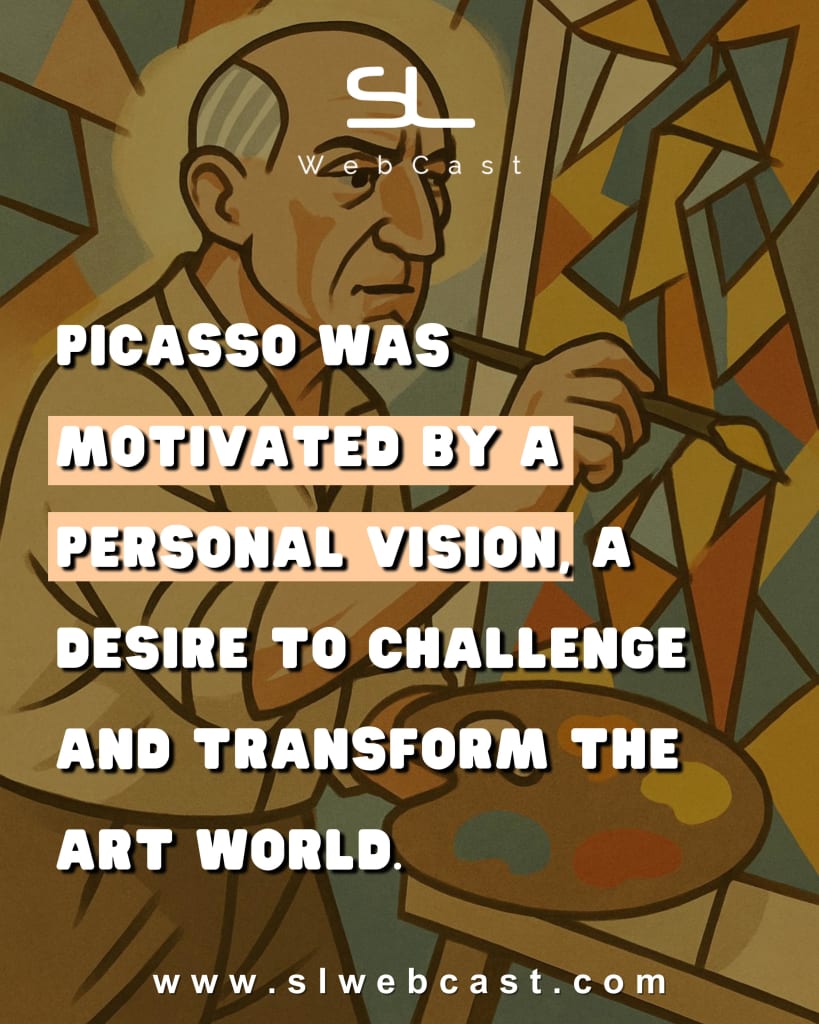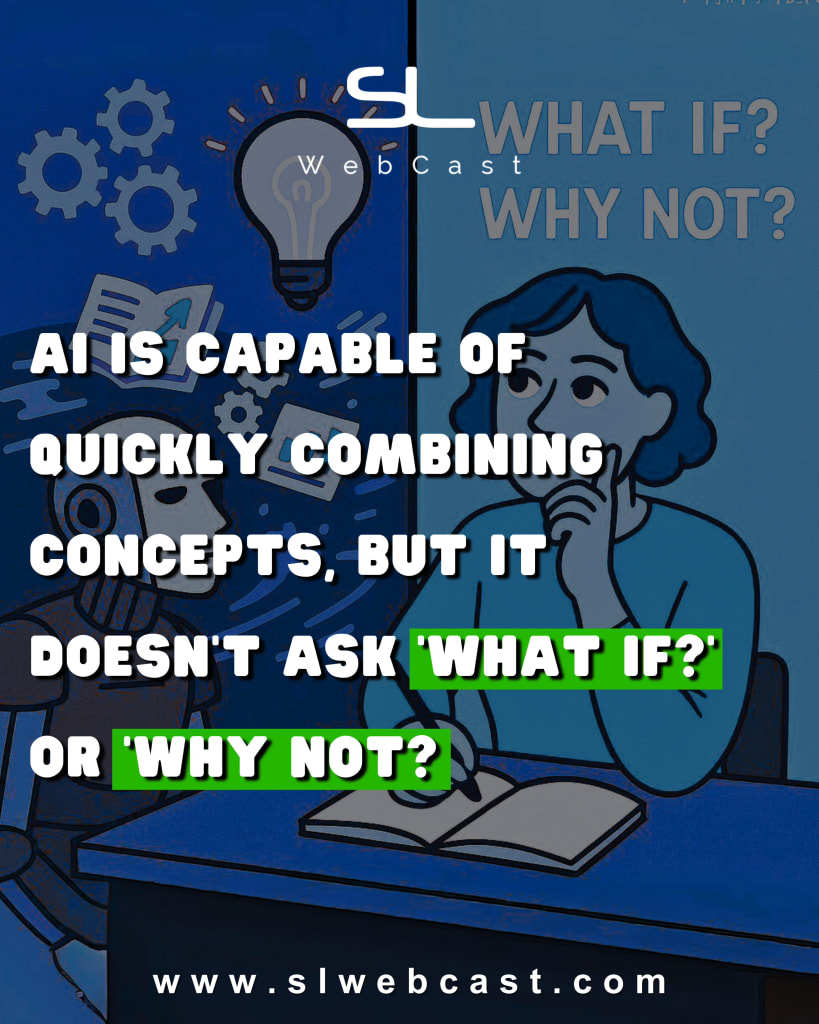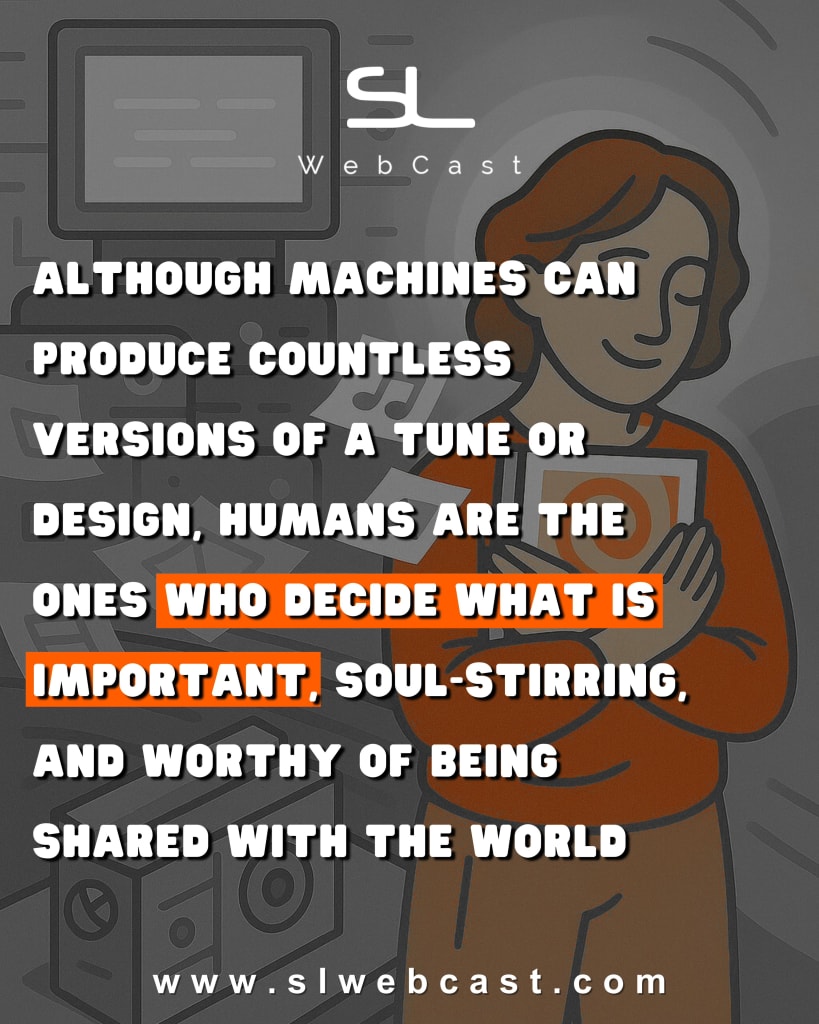Today’s world is so dominated by artificial intelligence (AI) that it frequently seems as though machines are not only catching up to humans but also entering domains that we once believed to be exclusively human -like creativity. These days, AI can create artwork, poems, symphonies, and even product designs. This leads to the intriguing and significant question: are machines truly capable of innovation, or are they merely replicating and combining what already exists? We can gain a deeper understanding of both the remarkable potential of artificial intelligence and the distinctive, irreplaceable qualities of human creativity by exploring this topic.
To answer the question, we must first consider what creativity actually is. Being creative is more than just simply making something that appears novel. It involves producing something unique, significant, worthwhile, and often closely related to the human condition. It is driven by feelings, instinct, imagination, and occasionally a desire to defy authority or alter the course of events. For instance, the iPhone was more than just a phone, music player, and computer when Steve Jobs and his colleagues at Apple first unveiled it. It was the outcome of rethinking how people engage with technology, build relationships, and perceive information. That innovation had a vision, and purpose-intellectual, cultural, and emotional. Similarly, J.K. Rowling did more than simply weave mystical spells and fantastical creatures into her Harry Potter novels. She drew inspiration from her own experiences, hardships, and convictions to build an entire world full of moral teachings, human problems, and emotional depth. Such human creativity has always involved more than just rearrangement; it involves the expression of something significant, frequently with the intention of influencing people’s lives or shifting perspectives.

However, AI creates in a fundamentally different way. AI systems aren’t able to feel, dream, or envisage. They lack emotions, personal experiences, and a sense of direction. Instead, artificial intelligence (AI) finds patterns in vast volumes of data, including books, artworks, melodies, and designs. It makes predictions based on these patterns about what might happen next or what would complement one another. A program like DALL·E 2 will generate a visually attractive image that matches your description if you ask it to create “a futuristic city in the style of Van Gogh.” However, neither vision nor inspiration produced this image. AI is not interested in futuristic cities. It does not adopt Van Gogh’s style because it intends to convey a message about contemporary life or because it admires his work. Rather, it mimics patterns it has learnt from hundreds of Van Gogh paintings and science-fiction landscapes to create an image based on probability. Similarly, artificial intelligence (AI) composers such as AIVA or Amper are able to create beautiful-sounding music by combining learnt structures and patterns, not because they experience the same feelings that inspired Ravi Shankar or Beethoven.

Pablo Picasso’s art serves as an example of the contrast between human innovation and AI pattern-matching. Picasso and Georges Braque created Cubism without attempting to replicate anything that had previously existed. Instead, they defied traditional art conventions in order to present a new perspective on reality. Cubism redefined space, perspective, and form. It was both daring and revolutionary. Picasso was driven by a personal vision, a desire to challenge and transform the world of art. AI, on the other hand, can create cubist-style artworks only after viewing and analysing cubist paintings, and does not establish new movements or challenge artistic standards since it lacks an inner purpose or desire to communicate something unique.

Alexander Fleming’s discovery of penicillin is just another stunning illustration of human ingenuity. Fleming was not the first scientist to observe mold-killing bacteria in his lab; numerous other scientists might have noticed the same thing. The leap he took to relate this insight to the potential of a revolutionary medication was what inspired his creativity. He came up with a previously unheard-of idea: an antibiotic that could save millions of lives. Although AI is incredibly fast at processing and analysing data, it lacks wonder and curiosity. It doesn’t use instinct or intuition to draw unexpected conclusions. It can’t fathom a game-changing solution to a bizarre mishap.
This is not to say AI has no place in the creative industry. Actually, AI has the potential to be a very beneficial collaborator in the creative process. For instance, fashion designers now use AI tools to create colour schemes or patterns that they might not have previously considered. In order to generate fresh variations of their works, musicians occasionally feed them into AI systems. They then use their artistic sensibility and feelings to refine the results. Architects experiment with AI-generated forms to inspire fresh designs and ideas. In these contexts, AI is helpful by providing alternatives, but the human heart and mind provide the ultimate meaning, purpose, and beauty.

What makes human creativity so potent is that it is fuelled by awareness, emotions, and the capacity to see the future. People are capable of dreaming, questioning, and crossing boundaries. We may express who we are, how we feel, and what we hope for through art, stories, innovations, and solutions that we produce. AI is capable of quickly combining concepts, but it doesn’t ask “What if?” or “Why not?” It has no concept of what a better world could look like. Only humans do.
Perhaps the most interesting possibilities for the future might arise from the collaboration between AI and humans. The meaning, emotion, and vision will always come from humans, though AI can perform monotonous tasks, generate combinations, and offer inspiration. Although machines can produce countless versions of a tune or design, humans determine what is important, soul-stirring, and worthy of being shared with the world. Therefore, even though AI may imitate creativity, true innovation-the kind that transforms lives, pushes the boundaries of society, and reflects something truly human-will always be ours.


